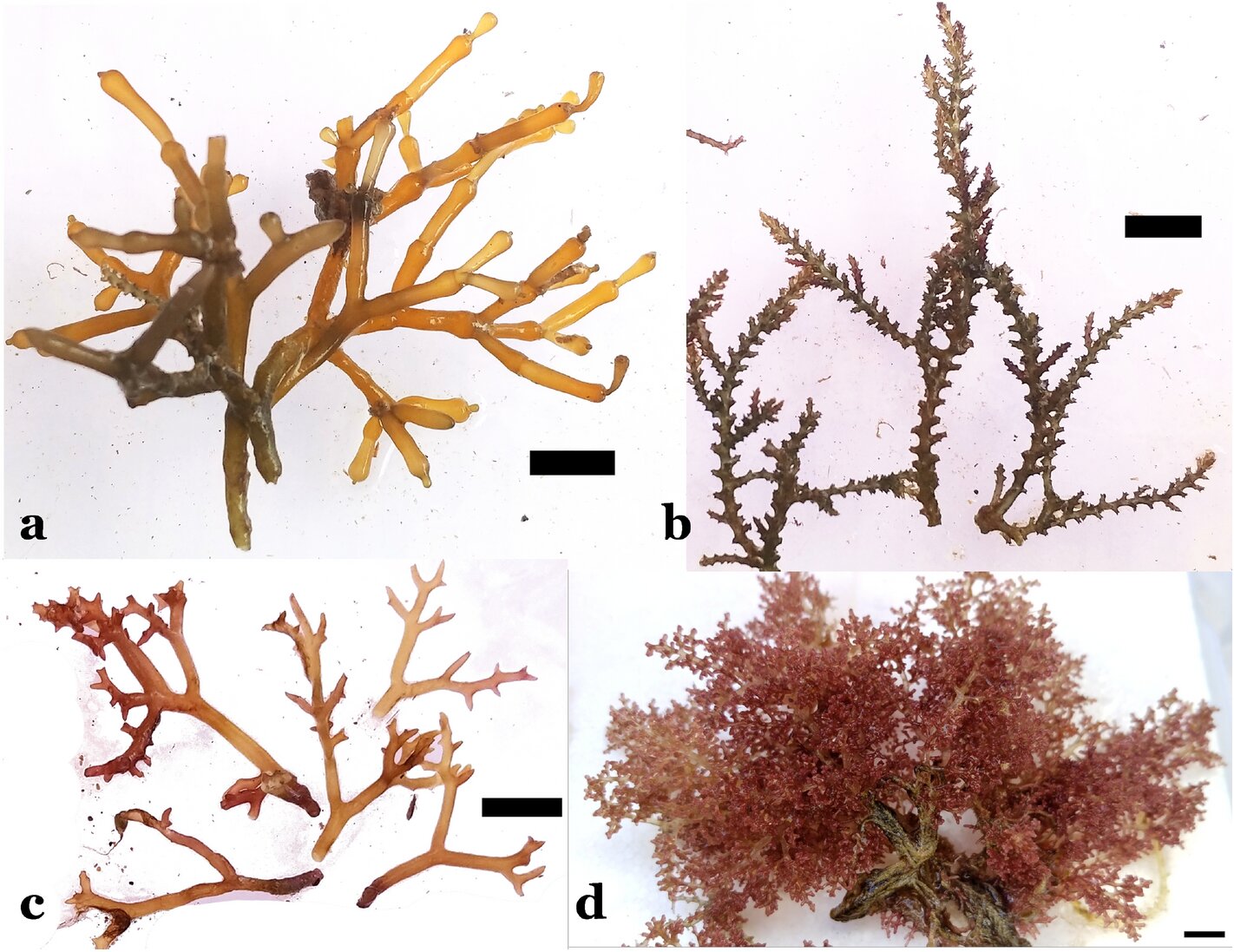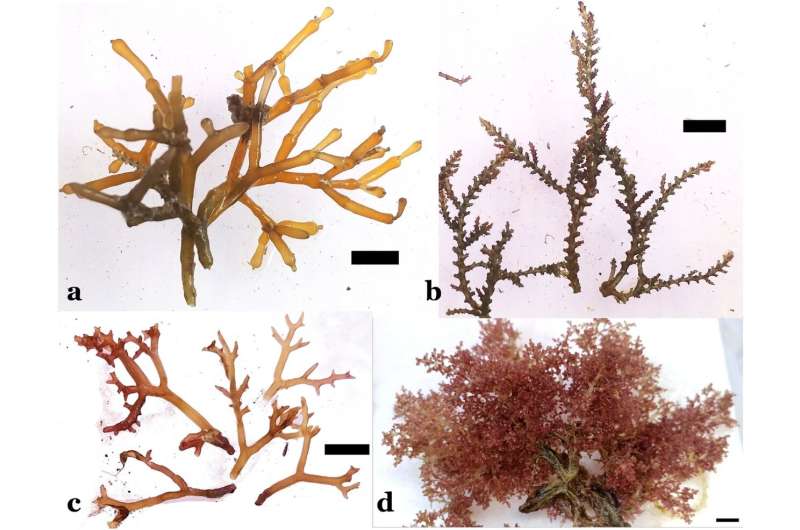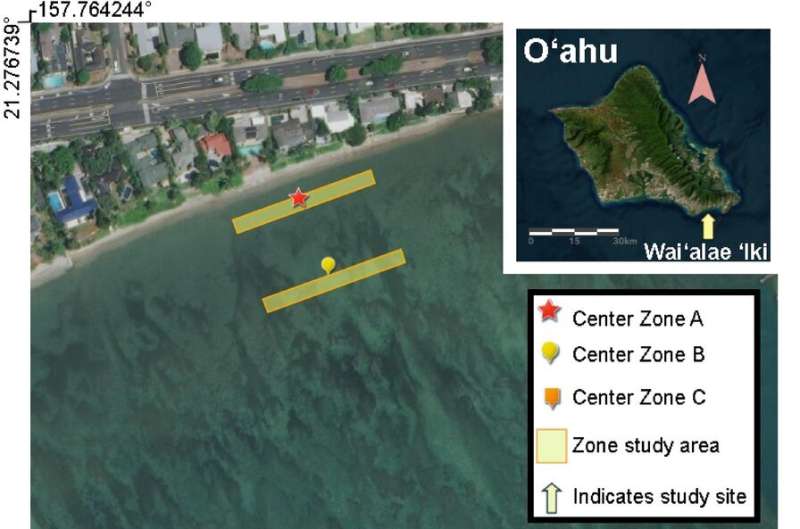

If you traverse some of Hawaiʻi’s shorelines (specifically Oʻahu’s south and east shores, parts of Maui and Hilo) and notice seaweed in the water, chances are they could be invasive and not native species. And this could have an adverse effect on the seafood we eat and the health of coral reefs.
Botanists from the University of Hawaiʻi at Mānoa have uncovered key survival strategies used by invasive seaweed species in nearshore ecosystems, potentially explaining their dominance over native Hawaiian limu in certain habitats. Nearshore ecosystems extend up to 300 feet offshore, encompassing the shallow coastal waters where land and ocean environments interact and many marine species live and feed.
An October 2024 study published in Scientific Reports found that invasive species such as “gorilla ogo” and “spiny seaweed” thrive in areas with submarine groundwater discharge, where daily tidal cycles create extreme salinity (salt level) fluctuations.
“Understanding how invasive seaweed outcompetes native limu is crucial to furthering our knowledge about reefs and ocean environments,” said Veronica Gibson, a postdoctoral researcher at the UH Mānoa Hawaiʻi Institute of Marine Biology and Heʻeia National Estuarine Research Reserve, and UH Mānoa School of Life Sciences Ph.D. graduate.
“These spring-fed coastal areas are unique ecosystems that connect our land use practices directly to ocean health, and what happens to limu—which forms the base of our marine food web—affects everything from the fish we catch to the overall health of our coral reefs.”

Advanced techniques
The research team used advanced plant biology techniques to study how different seaweed species cope with these harsh conditions. Their key method involved measuring how seaweed cells adjust their internal chemistry when exposed to changing salt levels in the water.
Much like a dried grape swells in water, seaweed cells react to changes in their environment. The scientists found that successful species can quickly change the concentration of dissolved substances inside their cells to match external changes. This ability to regulate internal water pressure is crucial for survival. Seaweed species that can’t adjust quickly enough suffer severe damage—their cells either burst from taking in too much water or shrivel up from losing too much water.
The invasive species showed remarkable adaptability and developed other survival tactics. Both types showed thinner cell walls in spring-affected areas, while gorilla ogo displayed peak photosynthesis near freshwater springs and developed smaller cells to better handle stress.
Native species, including limu maneʻoneʻo, were notably absent from spring-influenced areas despite showing similar cellular characteristics to invasive species in offshore environments.
The findings come as human activity continues to impact watershed systems and submarine groundwater discharge. Submarine groundwater discharge occurs when fresh water from underground aquifers seeps or flows directly into the ocean through the seafloor, creating areas where fresh and saltwater mix near the shore.
Researchers emphasize the importance of understanding how native species survive in these conditions as changes in water quality and quantity affect nearshore ecosystems, potentially influencing food webs and coral cover. Further research will focus on native limu tolerance and linking findings to watershed management strategies, particularly in areas affected by nutrient pollution from groundwater springs.
Other authors on the paper are Angelene Dedloff, who earned her bachelor’s degree from the UH Mānoa School of Life Sciences; Kapiʻolani Community College Assistant Professor Lisa Miller; and UH Mānoa School of Life Sciences Professor Celia Smith.
More information:
Veronica L. Gibson et al, Integrated physiological response by four species of Rhodophyta to submarine groundwater discharge reveals complex patterns among closely-related species, Scientific Reports (2024). DOI: 10.1038/s41598-024-74555-6
Provided by
University of Hawaii at Manoa
Citation:
Invasive seaweed may better adapt to changes than native species in Hawaii waters (2024, October 14)
retrieved 14 October 2024
from https://phys.org/news/2024-10-invasive-seaweed-native-species-hawaii.html
This document is subject to copyright. Apart from any fair dealing for the purpose of private study or research, no
part may be reproduced without the written permission. The content is provided for information purposes only.

